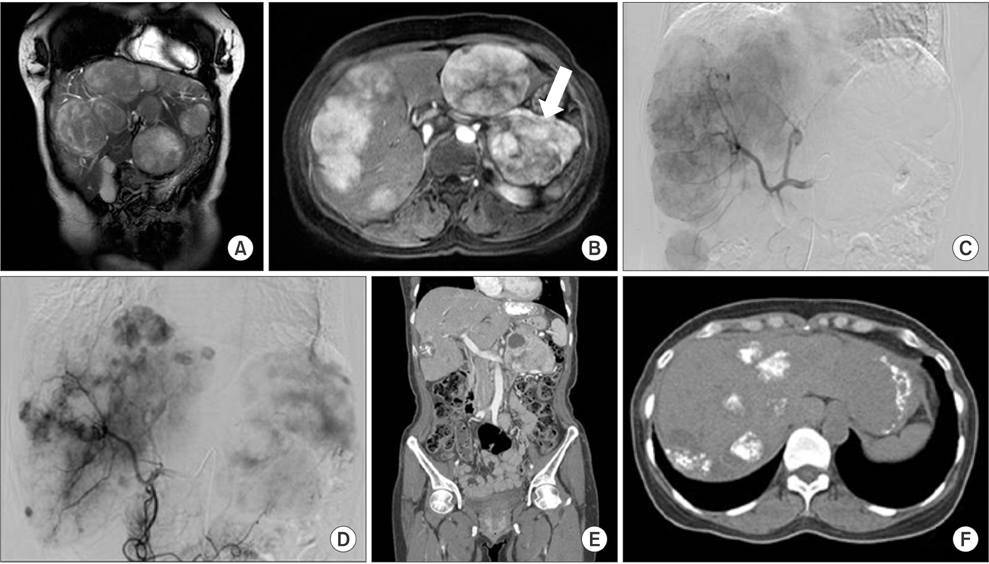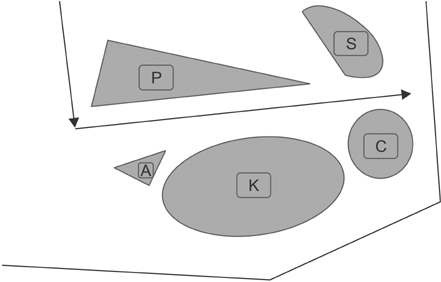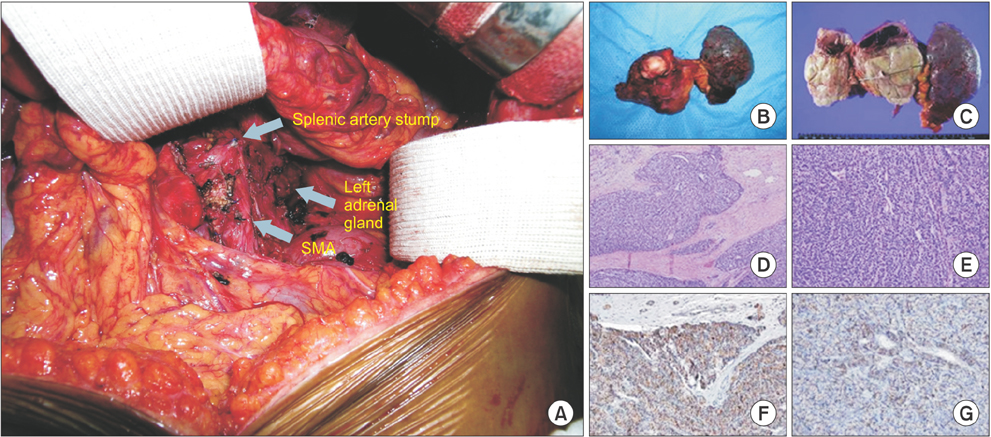Ann Surg Treat Res.
2015 Feb;88(2):106-110. 10.4174/astr.2015.88.2.106.
Transfusion free radical antegrade modular pancreaticosplenectomy of metastatic neuroendocrine tumor of the pancreas in Jehovah's Witness patient
- Affiliations
-
- 1Department of Surgery, Soonchunhyang University College of Medicine, Cheonan, Korea.
- 2Department of Surgery, Hanyang University College of Medicine, Seoul, Korea. crane87@hanyang.ac.kr
- KMID: 1804128
- DOI: http://doi.org/10.4174/astr.2015.88.2.106
Abstract
- In a popular sense, Jehovah's Witnesses (JW) have their creeds, one of which is refusal of blood transfusion. Such refusal may impinge on their proper management, especially in critical situations. We present a case of successful bloodless multimodality therapy, which was performed for a JW. The patient was a 49-year-old woman and JW who had general weakness 7 days before admission. She was diagnosed with a pancreatic neuroendocrine tumor (PNET) with hepatic metastases. Transcatheter arterial chemoembolization and Sandostatin LAR injection were performed, and then she was given a transfusion-free Radical antegrade modular pancreatosplenectomy sequentially. We gave recombinant human erythropoietin and iron hydroxide sucrose complex daily for five days after surgery. She was discharged at postoperative day 12 without any surgical complications. Multimodality therapy is very important for optimal treatment of PNET. Along with intimate interdepartmental cooperation, careful patient selection and appropriate perioperative management could possibly enhance the surgical outcome.
Keyword
MeSH Terms
-
Blood Transfusion
Bloodless Medical and Surgical Procedures
Disulfiram
Erythropoietin
Female
Humans
Iron
Jehovah's Witnesses
Middle Aged
Neoplasm Metastasis
Neuroectodermal Tumors, Primitive
Neuroendocrine Tumors*
Octreotide
Pancreas*
Pancreatectomy
Patient Selection
Sucrose
Disulfiram
Erythropoietin
Iron
Octreotide
Sucrose
Figure
Cited by 1 articles
-
Effects of acute normovolemic hemodilution on healing of gastric anastomosis in rats
Tae Yeon Kim, Dong Won Kim, Mi Ae Jeong, Jong Hun Jun, Sung Jeong Min, Su-Jin Shin, Tae Kyung Ha, Dongho Choi
Ann Surg Treat Res. 2018;95(6):312-318. doi: 10.4174/astr.2018.95.6.312.
Reference
-
1. Chamberlain RS, Canes D, Brown KT, Saltz L, Jarnagin W, Fong Y, et al. Hepatic neuroendocrine metastases: does intervention alter outcomes? J Am Coll Surg. 2000; 190:432–445.2. Hung JS, Chang MC, Lee PH, Tien YW. Is surgery indicated for patients with symptomatic nonfunctioning pancreatic neuroendocrine tumor and unresectable hepatic metastases? World J Surg. 2007; 31:2392–2397.3. Magner D, Ouellette JR, Lee JR, Colquhoun S, Lo S, Nissen NN. Pancreaticoduodenectomy after neoadjuvant therapy in a Jehovah's witness with locally advanced pancreatic cancer: case report and approach to avoid transfusion. Am Surg. 2006; 72:435–437.4. Halperin DM, Kulke MH. Management of pancreatic neuroendocrine tumors. Gastroenterol Clin North Am. 2012; 41:119–131.5. Strasberg SM, Drebin JA, Linehan D. Radical antegrade modular pancreatosplenectomy. Surgery. 2003; 133:521–527.6. Park HJ, You DD, Choi DW, Heo JS, Choi SH. Role of radical antegrade modular pancreatosplenectomy for adenocarcinoma of the body and tail of the pancreas. World J Surg. 2014; 38:186–193.7. Hill JS, McPhee JT, McDade TP, Zhou Z, Sullivan ME, Whalen GF, et al. Pancreatic neuroendocrine tumors: the impact of surgical resection on survival. Cancer. 2009; 115:741–751.8. Muniraj T, Vignesh S, Shetty S, Thiruvengadam S, Aslanian HR. Pancreatic neuroendocrine tumors. Dis Mon. 2013; 59:5–19.9. Kondo NI, Ikeda Y, Maehara S, Sugimoto R, Nishiyama K, Sakaguchi Y. Role of resection of the primary pancreatic neuroendocrine tumor in the multidisciplinary treatment of patients with unresectable synchronous liver metastases: a case series. JOP. 2013; 14:415–422.10. Marsh JC, Bevan DH. Haematological care of the Jehovah's Witness patient. Br J Haematol. 2002; 119:25–37.
- Full Text Links
- Actions
-
Cited
- CITED
-
- Close
- Share
- Similar articles
-
- ERRATUM: Correction of the 1st and 2nd authors' affiliation: Transfusion free radical antegrade modular pancreaticosplenectomy of metastatic neuroendocrine tumor of the pancreas in Jehovah's Witness patient
- Successful transfusion-free pancreatectomy in Jehovah's Witness patients
- Anesthetic management of Jehovah's Witness patients
- Anesthetic Management of the Jehovah`s Witness Patient
- Anesthesia for a Jehovah's Witness Patient Experiencing Unexpected Perioperative Hemorrhage: A Case Report




